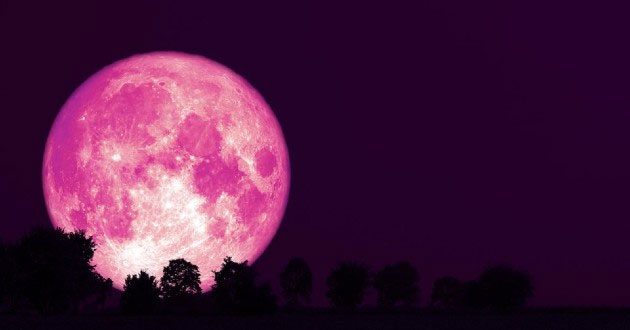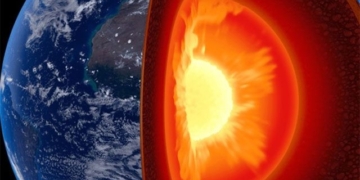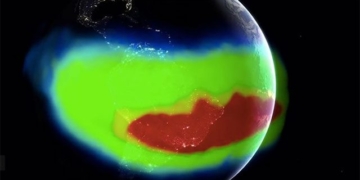The full moon in the second lunar month is referred to as the Pink Moon by North Americans because of its resemblance to the wildflower that blooms in the area in April.
According to the Hanoi Astronomy Society (HAS), the Pink Moon will occur on the evening of April 6, marking one of the most anticipated astronomical events of the month.
The name “Pink Moon” originates from a common wildflower found in North America called phlox, which blooms in spring. April is when phlox flowers burst into bloom, creating a stunning pink carpet across the ground where they grow abundantly. This full moon period is referred to as the Pink Moon by local indigenous people.

The Pink Moon is an interesting astronomical event in April.
Other common names for this full moon include the Grass Moon, the Hare Moon, and the Fish Moon. This full moon also coincides with the Easter celebration among Christians, which typically occurs on the first Sunday of April. This year, Easter for Protestants falls on April 9, while Orthodox Christians celebrate it on April 13, the day believed to mark the resurrection and ascension of Jesus Christ.
According to the Hindu lunar calendar (which combines lunar and solar calendars), this full moon marks the Hanuman Jayanti festival and is significant for Buddhists in Sri Lanka.
Mr. Dang Vu Tuan Son, from the Vietnam Astronomy and Astrophysics Association, explains that the Pink Moon occurs when the Moon is positioned opposite the Earth (with Earth located between the Moon and the Sun). At this time, the Moon appears larger and brighter than usual. Although it is called the Pink Moon, it may appear white, yellow, or other colors that night.
While it doesn’t actually turn pink, in many parts of the world, the Moon can take on a light red hue. The perceived color of the Moon also depends on the observation conditions. Mr. Dang Vu Tuan Son notes that a pink-colored Moon is not rare. Typically, when the Moon is lower in the sky, it tends to exhibit more red shades, especially in polluted atmospheres or where there are distinct layers of air, which affect the refraction of light. If one waits for the Moon to rise higher, it may not appear that color.
According to Mr. Dang Vu Tuan Son, the Moon does not emit its own light; what we see is sunlight reflected off the Moon’s surface. As the Moon orbits the Earth, the illuminated area we see changes over time. The changing shape of the illuminated area, measured in cycles, is referred to as the Moon’s phases. The lunar calendar we use is based on these phases.
Daily, the Moon appears white or yellow. However, during a lunar eclipse—when the Moon is full and passes into the Earth’s shadow—part or all of the Moon can appear red, with the penumbral region appearing light red, or what could be described as pink.
The best time to view this full moon is when it rises in the east on April 6, shortly after sunset. You can check the rising time for your location and find a clear spot to observe the Moon, as it will rise relatively low on the eastern horizon.
As the Moon rises and becomes full, it will appear orange when viewed from the horizon. The light from the Moon will illuminate the entire atmosphere of the Earth. This means that shorter wavelengths of blue light are scattered more in the atmosphere, while longer wavelengths of red and orange light pass through more easily.
After the Pink Moon, the next full moon will occur on May 5. This full moon is referred to as the Flower Moon because it coincides with the blooming season of plants and the corn planting period.




















































